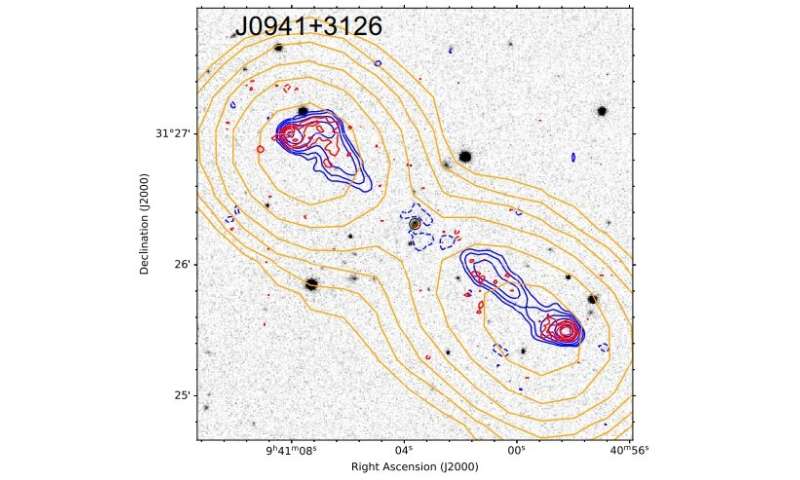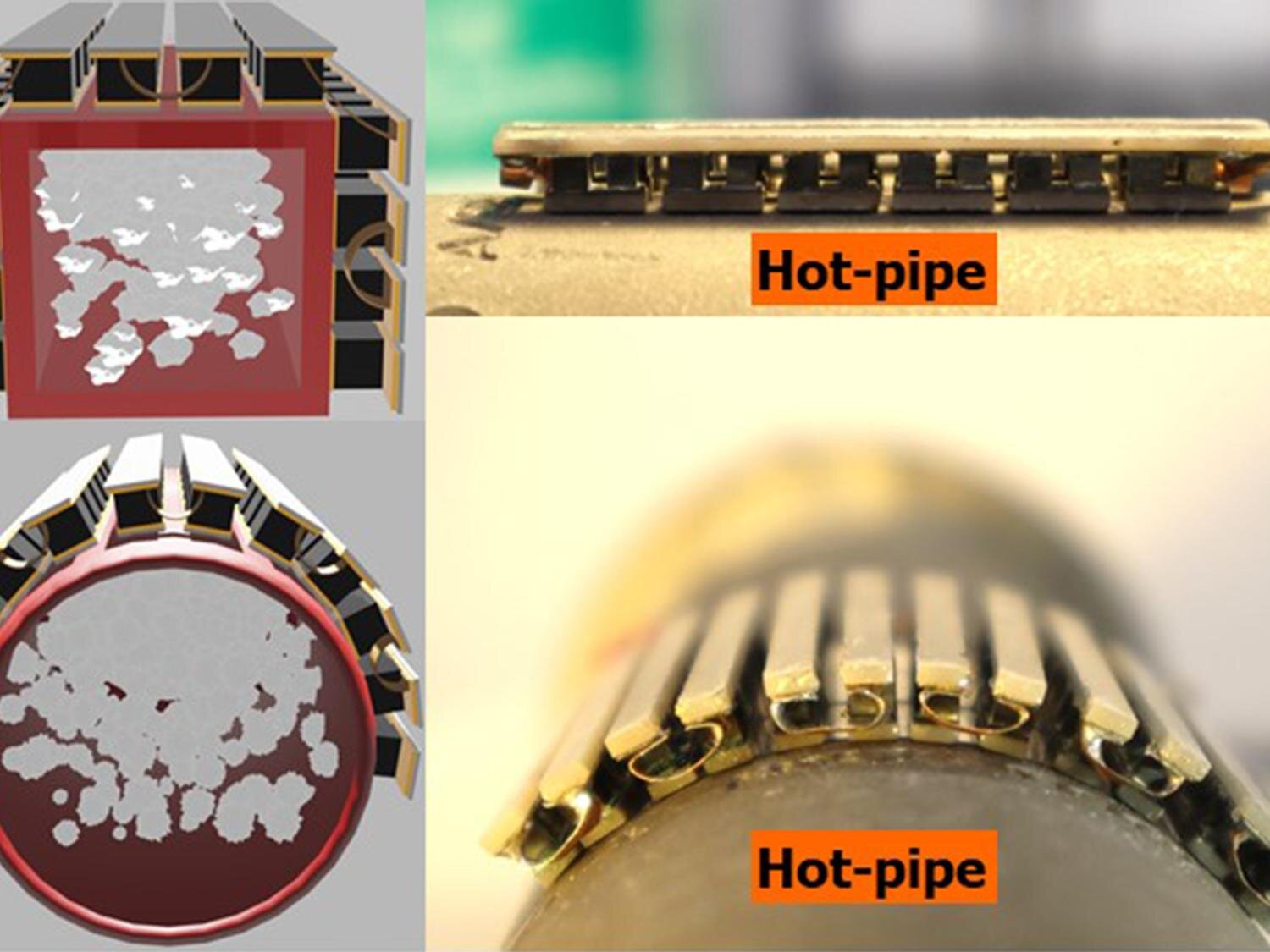#Five new giant radio galaxies discovered
“#Five new giant radio galaxies discovered”
September 16, 2020
report

With the help of citizen scientists, astronomers have detected five new giant radio galaxies (GRGs). The new GRGs have sizes ranging from 2.3 to 2.6 million light years, and have been identified at redshift between 0.28 and 0.43. The finding is reported in a paper published September 8 on the arXiv pre-print server.
GRGs are radio galaxies with an overall projected linear length exceeding at least 2.28 million light years. They are rare objects grown in low-density environments. GRGs are important for astronomers to study the formation and the evolution of radio sources.
Now, a team of astronomers led by Hongming Tang of the University of Manchester, UK, reports the finding of five previously unknown GRGs. The detection is based on the Data Release 1 (DR1) of the Radio Galaxy Zoo (RGZ) citizen science project. RGZ DR1 is a manually cross-matched radio galaxy catalog using the efforts of more than 12,000 citizen scientist volunteers.
“In this paper, we present the identification of five previously unknown giant radio galaxies (GRGs) using Data Release 1 of the Radio Galaxy Zoo citizen science project and a selection method appropriate to the training and validation of deep-learning algorithms for new radio surveys,” the astronomers wrote in the paper.
The newly identified GRGs are designated J0941 3126, J1331 2557, J1402 2442, J1421 1016 and J1646 3627. They all have comparatively high radio luminosities and are likely to be either elliptical or intermediate disk galaxies.
J1402 2442 (also known as B2 1400 24) is the largest out of the newly found GRGs. It has a redshift of approximately 0.337 and its host is a close pair of galaxies, designated SDSS J140224.25 244224.3 and SDSS J140224.31 244226.8. At a redshift of about 0.28, J0941 3126 (or B2 0938 31A) is the smallest GRG from the five reported in the study. This source is hosted by SDSS J094103.62 312618.7.
In the case of J1646 3627, a GRG with a size of at least 2.46 million light years, at a redshift of 0.43, the researchers found that this object is also the brightest cluster galaxy (BCG) in the galaxy cluster GMBCG J251.67741 36.45295. This finding motivated Tang’s team to conduct further study of BCGs. They report that 13 previously known GRGs could be classified as BCG candidates. If confirmed, this would increase the number of known BCG GRGs by more than 60 percent.
The remaining two giant radio galaxies described in the study, namely J1331 2357 and J1421 1016, have sizes of about 2.62 and 2.49 million light years, respectively. J1331 2357 has a redshift of 0.33 and its host galaxy is identified as SDSS J133118.01 235700.4, while J1421 1016, at a redshift of 0.37, has a host galaxy known as SDSS J142142.68 101626.2.
More information:
Tang et al., Radio Galaxy Zoo: New Giant Radio Galaxies in the RGZ DR1 catalog, arXiv:2009.03583 [astro-ph.GA]. arxiv.org/abs/2009.03583
© 2020 Science X Network
Five new giant radio galaxies discovered (2020, September 16)
retrieved 16 September 2020
from https://phys.org/news/2020-09-giant-radio-galaxies.html
This document is subject to copyright. Apart from any fair dealing for the purpose of private study or research, no
part may be reproduced without the written permission. The content is provided for information purposes only.
if you want to watch Movies or Tv Shows go to Dizi.BuradaBiliyorum.Com for forums sites go to Forum.BuradaBiliyorum.Com
If you want to read more Like this articles, you can visit our Science category.




